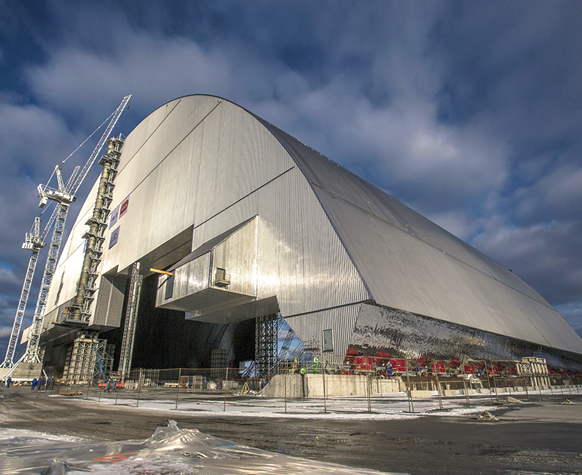The EBRD and Chernobyl
In the 30th anniversary year of the Chernobyl nuclear accident, the arch-shaped steel structure designed to enclose the remains of the power plant’s destroyed reactor 4 reached its final resting place. The achievement was a defining moment in one of the most ambitious projects in engineering history.
The EBRD played a vital role in securing the Chernobyl site through its management of international funds for decommissioning activities. It is also the largest single contributor to Chernobyl-related projects.
The New Safe Confinement (NSC) is the biggest moveable land-based structure ever built, with a span of 257 metres, a length of 162 metres, a height of 108 metres and a total weight of 36,000 tonnes when equipped. With a lifetime of 100 years, the NSC will make the accident site safe and allow for the eventual dismantling of the temporary shelter put up in 1986 as well as supporting the management of radioactive waste.
In November, workers moved the NSC 327 metres from the area where it was assembled to its end position above reactor 4 in a unique sliding operation. Remaining tasks include the completion of a building that will serve as the control centre for future operations of the NSC, the installation and testing of systems and connections between the NSC and other facilities, and the handover to Ukrainian operators that is scheduled for late 2017.
Since 1997, the EBRD has managed the Chernobyl Shelter Fund, which finances the €1.5 billion NSC and related projects. Their combined cost is expected to reach €2.1 billion. (For more information about the EBRD’s work on nuclear safety, see page 49.)


